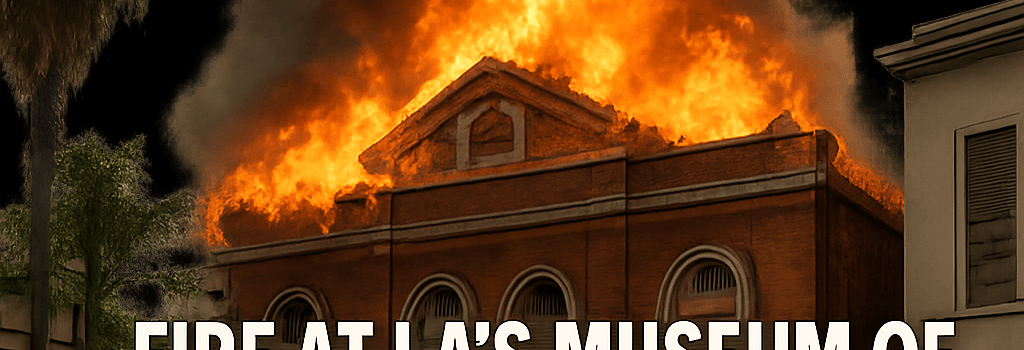Fire at LA’s Museum of Jurassic Technology: Damage and Restoration

By Jennifer Ouellette – Jul 22, 2025 11:10 am
Credit: Callum Parry/LAFD
Overview of the Incident
In the pre-dawn hours of July 8, 2025, a fire broke out in the gift shop of the Museum of Jurassic Technology (MJT), one of Los Angeles’s most unconventional cultural institutions. While the exterior walls remained intact, the blaze gutted the shop area and produced pervasive smoke that infiltrated adjacent galleries, affecting over a dozen exhibits.
Immediate Response and Firefighting Efforts
- Initial Containment: Founder David Hildebrand Wilson, alerted by smoke detectors tied into the museum’s IoT alarm network, deployed two handheld dry-chemical extinguishers (Monoammonium Phosphate, 4A:60B:C rating) on a rapidly spreading flame in the corner display.
- Secondary Intervention: Wilson’s daughter and son-in-law arrived with a 20-pound ABC fire extinguisher (12A:80B:C rating), enabling full suppression before the LA Fire Department (LAFD) arrived.
- Professional Extinguishment: LAFD crews used high-pressure water mist nozzles and thermal-imaging cameras to locate hidden hotspots in wall cavities.
“Just one more minute and you’d likely have lost the whole building,” said one LAFD captain, emphasizing the narrow margin that prevented a structural collapse.
Extent of Damage
- Gift Shop: Complete loss of retail inventory, point-of-sale hardware (POS terminals), and custom cabinetry.
- Smoke Infiltration: Fine particulate residue coated vitrines, microscope eyepieces, HVAC filters, and ambient-light sensors.
- Estimated Revenue Loss: Approximately $75,000 in ticket and merchandise sales during the closure period.
Technical Deep Dive: Fire Mitigation Systems
Even without a full sprinkler system, MJT’s suite of addressable fire detectors and zoned alarm modules under UL 268 standards provided early warning. The museum is now evaluating a retrofit with clean-agent suppression (e.g., FM-200 or Novec 1230) to protect delicate artifacts from water or foam damage.
Smoke Damage Restoration Techniques
Conservators are employing:
- Dry Ice Blasting: Non-abrasive technique to lift soot from porous surfaces without moisture.
- HEPA-Filtered Air Scrubbers: To remove airborne particulates down to 0.3 microns, safeguarding electronics and archival materials.
- Analytical Testing: FTIR (Fourier-Transform Infrared Spectroscopy) to detect residual hydrocarbon chains on display cases, followed by conservation-grade solvents.
Preserving Cultural Heritage: Expert Perspectives
Dr. Anna Meyer, chief conservator at the Getty Conservation Institute, commented:
“Smoke particulates can catalyze long-term chemical degradation in organic and synthetic materials. Rapid intervention using inert gas flushing and controlled climate conditions is critical.”
Financial and Community Impact
Since 1988, MJT has operated on a lean budget, relying on ticket sales, donations, and grants. In the wake of the fire, a crowdfunding campaign has raised over $50,000 toward a $100,000 target for restoration, aided by a recent emergency grant from the California Office of Historic Preservation.
Future-Proofing the MJT
- IoT Environmental Monitoring: Installing wireless sensor networks for real-time tracking of temperature, humidity, and particulate matter.
- AI-Driven Predictive Maintenance: Leveraging machine learning algorithms to forecast HVAC filter replacement and detect anomalies in fire-safety systems.
- Digital Exhibits: Creating virtual 3D scans of fragile items using photogrammetry and LiDAR to ensure digital preservation.
Call for Support
Volunteers and donors are encouraged to visit the MJT website for updates on reopening plans, scheduled for late August 2025. Contributions will directly fund smoke remediation, structural assessments, and advanced fire-suppression upgrades.